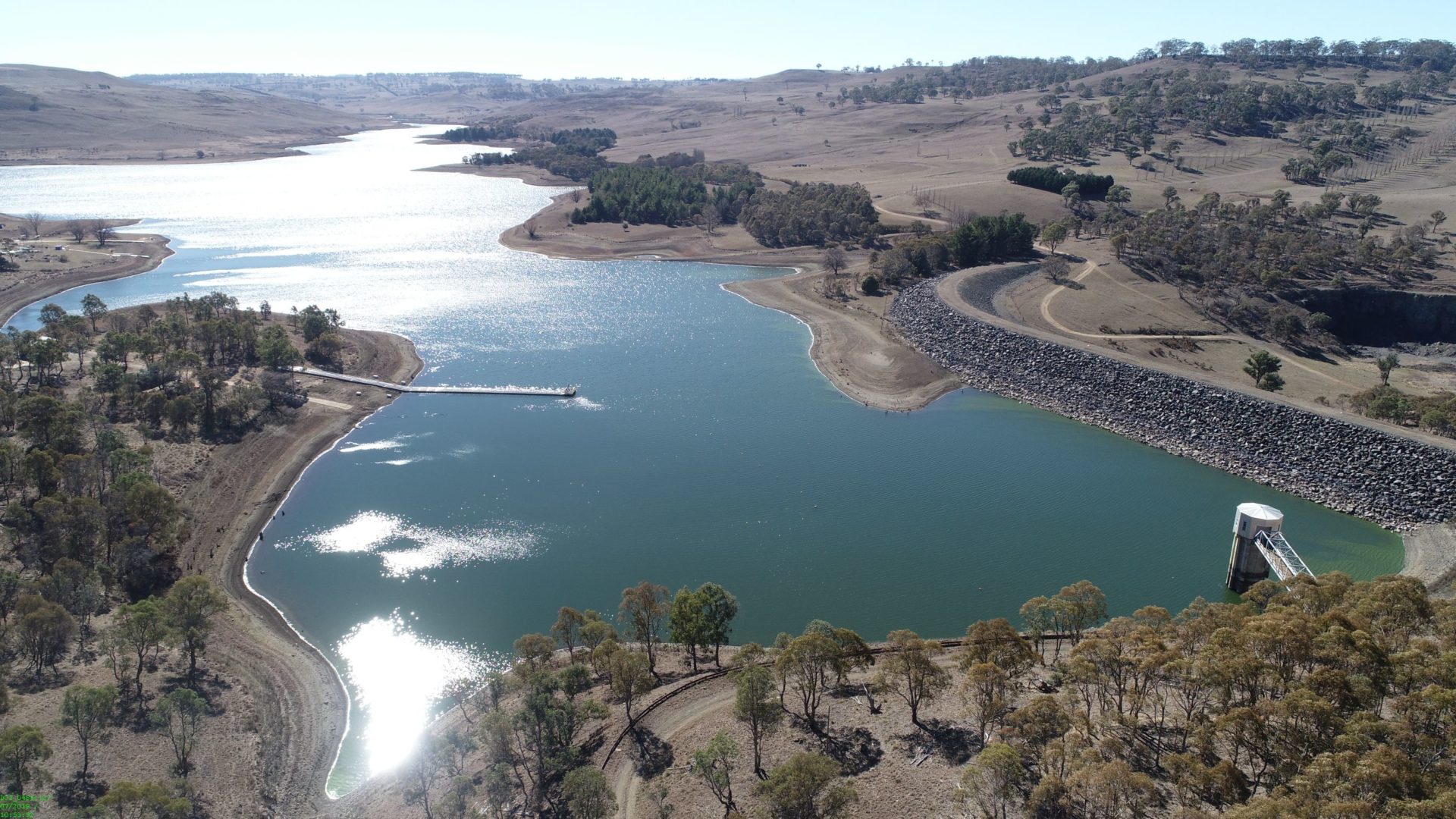
Water, where does it come from and where does it go?
Content and imagery provided by the Sustainability Officer at Armidale Regional Council
The water through our taps – where does it come from and where does it go?
In Armidale and many other places in the New England, we’ve been aware of reducing our water use in order to sustain the town supply.
Water availability is still so convenient in our towns, schools, and businesses, but how often have we really stopped to consider where it comes from, or for that matter, where it goes once we’ve pulled the plug and watched it swirl down the drain?
At UNE, the water flowing through campus taps for drinking and daily use comes from Malpas Dam.
Malpas Dam is located about 25 minutes drive north of Armidale, to the east of Black Mountain, and is the major water storage dam for Armidale. The catchment area is not large, it’s located at the very top of the Macleay River catchment on the eastern fall of the Great Dividing Range. Armidale city is not part of the Malpas Dam catchment, so it’s good to remember that the amount of rain falling here may be different to the amount in the catchment; it may not be filling the dam as it has filled our backyard ponds and farm dams in the last few weeks. Showers have been patchy and localised, and the soil has been soaking up water, so the current amount of runoff into the town drinking supply doesn’t reflect the wonderful rain we’ve had in Armidale during January.
Water is piped from Malpas Dam to the Water Treatment Plant in Armidale where it is treated to become safe for drinking. It is then stored in reservoirs around the town (one of the large, concrete tanks may be close to where you live), ready for distribution our homes and businesses as needed.
Despite our easy access to clean drinking water, less than 3% of the world’s water is available as freshwater to human communities and ecosystems. We use it in a multitude of ways every day – for drinking, cleaning, washing, preparing and growing food, and also for generating electricity, manufacturing products, transporting people and goods – it is our most precious resource. Globally, pressure on freshwater resources is likely to increase with population growth and changes to rainfall patterns due to climate change. Careful water use, through our behaviour and good design of equipment and homes, has a multitude of benefits, including easing future supplies, reducing the energy needed for treating and transporting water, and producing less wastewater.
Once water disappears down the drain, where does it go?
A network of underground pipes collects the wastewater and channels it to the Sewerage Treatment Plant, just east of Armidale. The plant treats wastewater using a biological process, so no chemicals are needed; incoming water is filtered, solids and liquids are separated in digester tanks, and the water is then disinfected using natural oxidation and UV light for at least 21 days.
You may have noticed the very green-looking farm on your left as you travel out of town along Waterfall Way – this is the Reuse Farm at the Sewerage Treatment Plant. The Reuse Farm was designed during the late 1990s to utilise the treated effluent for irrigation and fertiliser. Lucerne and perennial pasture crops draw the nutrients from the soil, achieving up to 100% re-use of bio-solids and 45% of effluent in productive agriculture. A 99kW solar farm comprising 360 ground-mounted solar panels was installed last year to help offset electricity used by the treatment plant, which has one of the highest energy requirements amongst Council’s facilities.

During Local Government Week in July, tours of the Water Treatment Plant and Sewerage Treatment Plant in Armidale may be offered to the public. They are popular – keep a lookout on Council’s website in the middle of the year for booking opportunities.
You can also visit the Council’s wastewater collection and treatment webpage for more information.
If you’d like to visit Malpas Dam, picnicking and viewing facilities overlooking the dam are available, but there is strictly no camping.
If you or someone you know is struggling with the effects of drought, there is help available.
Reach out to Beyond Blue, Lifeline or if you’re a student reach out to Advocacy & Welfare and they will point you in the right direction.


